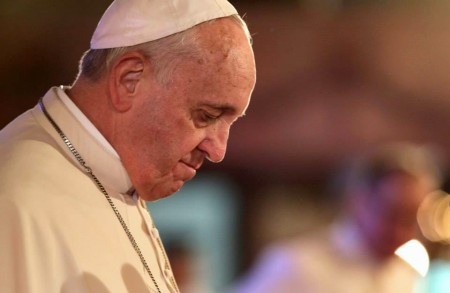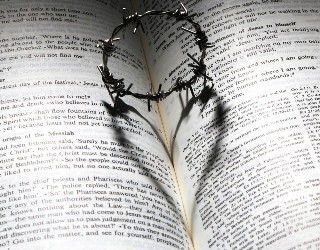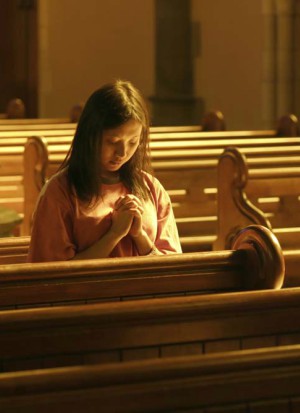Johann Joachim Winckelmann
FREE Catholic Classes
Archaeologist and historian of ancient art, born at Stendal near Magdeburg, in 1717; assassinated at Triest, in 1768.
After a wandering life devoted, in spite of scanty means, to the eager acquisition of knowledge, especially of Classical learning, he settled in Saxony in 1748. Here, close to Dresden with its art treasures, he obtained a position in the library of a count and had opportunities to visit the libraries and art collections of the capital.
He derived much benefit from his acquaintance with the painter Friedrich Oeser, by whom he was led to give his attention to the critical judgment of works of art and who stimulated him to write the work "Gedanken über die Nachahmung der griechischen Werke in der Malerei und Bildhauerkunst" (1755). In this book, written with extravagant enthusiasm for antiquity, the expression, "Noble simplicity and calm greatness of Greek statues ", occurs for the first time. Winckelmann was also a friend of the painter Dietrich and the archaeologist Heyne.
In 1754, after Winckelmann had become a Catholic, the king, to whom he had dedicated the work just mentioned, took more interest in him and granted a pension which enabled Winckelmann towards the end of 1755 to undertake his long-desired trip to Rome. By a careful study of the collections of painting at Rome, the libraries, the remains of ancient architecture, and especially the collections of antiquities at the Capitol, the Vatican, and the villas of the Borghesi, Medici, Ludovisi, etc. Winckelmann became the greatest authority in archaeology, a position which he maintained for many years. The painter Mengs did much to encourage his Classical taste, and Cardinal Albani, whose counsellor in learned matters Winckelmann became, proved himself a munificent patron. Winckelmann supervised the buildings erected by the cardinal, enriched his collections, and made known their value. He spent considerable time in Florence, cataloguing the collection of engraved gems belonging to Baron von Stosch. Of more importance were his journeys of investigation to Southern Italy, during which he studied the antiquities of Herculaneum, Pompeii, and Paestum. He was not able to make his much-desired visit to Sicily and Greece, yet this did not prove very detrimental to his life-work and his reputation. Although his history of art is based almost entirely upon the study of Roman works of art or Roman copies of Greek originals, yet with prophetic glance he had grasped the genuine spirit of antiquity.
 Hi readers, it seems you use Catholic Online a lot; that's great! It's a little awkward to ask, but we need your help. If you have already donated, we sincerely thank you. We're not salespeople, but we depend on donations averaging $14.76 and fewer than 1% of readers give. If you donate just $5.00, the price of your coffee, Catholic Online School could keep thriving. Thank you. Help Now >
Hi readers, it seems you use Catholic Online a lot; that's great! It's a little awkward to ask, but we need your help. If you have already donated, we sincerely thank you. We're not salespeople, but we depend on donations averaging $14.76 and fewer than 1% of readers give. If you donate just $5.00, the price of your coffee, Catholic Online School could keep thriving. Thank you. Help Now >
As the first literary guide to ancient art, Winckelmann won such fame that several succeeding generations were satisfied to accept his deductions and criticisms without paying much attention to newer discoveries. As a matter of fact, the "Geschichte der Kunst des Altertums" (Dresden, 1764; with notes upon it, Dresden, 1867) compels admiration not only for the industry of the author, who completed the great work while producing other books on various subjects, but, above all, for the spirit in which he grasped and presented, in general correctly, the conception of art of classic times. Occasionally, however, his views are one-sided and extreme. In 1766 a French translation of his history of ancient art was printed at Paris and Amsterdam. In the first part of the work he takes up æsthetic questions and treats of the origin and form of art, and of the different types under which it appeared in various nations. According to him the first and most important point in works of art is the idea embodied, whether original or partly borrowed; the second is beauty, that is, the variety in the simplicity; the third, technic. In the second part of the history, Greek art alone is discussed and it is brought down to the time of the Emperor Severus and Constantinople. Winckelmann's "Monumenti antichi inediti" (2 vols., with 216 plates, Rome, 1767) is a masterpiece of interpretation and explanation. The great archaeologist died a devout and sincere Catholic (Historisch-politische Blätter, 1858, 299 sqq.)








 Daily Readings for Friday, April 19, 2024
Daily Readings for Friday, April 19, 2024 St. Alphege: Saint of the Day for Friday, April 19, 2024
St. Alphege: Saint of the Day for Friday, April 19, 2024 Stewardship Prayer: Prayer of the Day for Friday, April 19, 2024
Stewardship Prayer: Prayer of the Day for Friday, April 19, 2024
